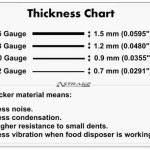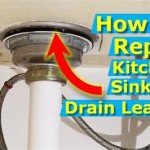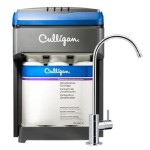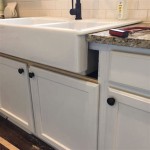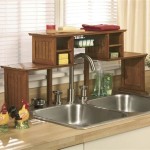Kitchen Sink Leaking From Base
A kitchen sink leaking from its base presents a frustrating plumbing problem that can lead to significant water damage if left unaddressed. Understanding the potential causes and solutions can help homeowners take the appropriate steps to fix the leak and prevent further complications. This article will explore the common reasons for base leaks in kitchen sinks, methods for identifying the source, and steps for repair or replacement.
Loose or Damaged Drain Nut
One of the most frequent culprits behind a kitchen sink base leak is a loose or damaged drain nut. This nut, also known as a locknut, secures the drain flange to the sink drain opening. Over time, vibrations and general wear and tear can loosen this nut, allowing water to seep out around the base of the sink. A damaged nut, perhaps cracked or corroded, can also compromise the seal, leading to leakage.
Inspecting the drain nut is a relatively straightforward process. Look underneath the sink and find the large nut that connects the drainpipe to the sink's drain opening. Check to see if it is loose by attempting to tighten it by hand. If it turns easily, it likely needs tightening. If the nut appears damaged, it will need to be replaced.
Failed Sink Flange Seal
The sink flange, the metal ring that sits between the sink and the countertop, relies on a sealant to create a watertight barrier. This sealant, typically plumber's putty, can dry out, crack, or become dislodged over time, rendering it ineffective and allowing water to escape around the base of the sink. Changes in temperature and regular use can contribute to the deterioration of the flange seal.
Identifying a failed flange seal requires a close visual inspection. Look for signs of cracking, gaps, or missing putty around the flange. If the sealant appears compromised, it needs to be replaced. This typically involves removing the old putty, cleaning the area thoroughly, and applying fresh plumber's putty.
Corroded or Cracked Sink
While less common than loose nuts or failed seals, a corroded or cracked sink itself can be the source of a base leak. Older sinks, particularly those made of porcelain or enameled steel, can become susceptible to corrosion, especially in areas exposed to constant moisture. A crack in the sink, perhaps caused by impact or stress, can also allow water to leak out.
Inspecting the sink for corrosion or cracks requires a thorough examination, especially around the base and drain opening. Look for signs of rust, discoloration, or visible cracks. If the sink is severely corroded or cracked, repair might be possible, but replacement often proves to be the more practical and long-term solution.
Damaged or Displaced P-Trap
The P-trap, the curved pipe located below the sink, plays a crucial role in preventing sewer gases from entering the home. A damaged or displaced P-trap, however, can also be a source of leaks. If the connections are loose or the trap itself is cracked, water can escape. Accidental bumps or shifts can sometimes dislodge the P-trap.
Inspect the P-trap and its connections to the drainpipe and the sink tailpiece. Look for signs of leaks, cracks, or loose connections. Tighten any loose nuts and replace any damaged components. If the P-trap itself is cracked, it will need to be replaced.
Leaking Water Supply Lines
While not directly related to the sink itself, leaking water supply lines connected to the faucet can sometimes be mistaken for a sink base leak. These supply lines, typically made of flexible braided metal or plastic, can develop leaks due to corrosion, wear and tear, or loose connections.
Carefully inspect the water supply lines connected to the hot and cold water shut-off valves under the sink. Look for signs of dripping, moisture, or corrosion. Tighten any loose connections. If a supply line is damaged, it should be replaced.
Garbage Disposal Leaks
If the kitchen sink has a garbage disposal unit, this can also be a potential source of leaks. The disposal unit can leak from several points, including the top, bottom, or sides. A leak at the bottom of the disposal can sometimes appear as a sink base leak.
Inspect the garbage disposal unit for signs of leaks. Look for drips, puddles, or corrosion around the unit. Check the connections between the disposal and the sink drain, as well as the discharge pipe. Depending on the source and severity of the leak, repair or replacement of the disposal unit might be necessary.
Identifying and addressing the source of a kitchen sink base leak is crucial to preventing further damage. While some repairs can be tackled by homeowners with basic DIY skills, more complex issues may require the expertise of a qualified plumber.

Kitchen Faucet Leaks At The Base Easy 5 Min Fix Youtube

Plumbing How To Fix A Small Faucet Leak At The Base Home Improvement Stack Exchange

Sealing A Leaky Faucet Base Plate 1 Tom Plumber

Gooseneck Faucet Leaking Around Base Easy Fix

Faucet Leaking At Base Of Spout Irv2 Forums

Single Hole Mixer Sink Taps Leaking At Base How To Fix It

Common Sink Leaks Richie S Plumbing

Kitchen Faucet Leaking At The Base Fix Your Leak In 6 Steps

Sealing A Leaky Faucet Base Plate 1 Tom Plumber

Plumbing What To Do With Leaky Sink Home Improvement Stack Exchange
